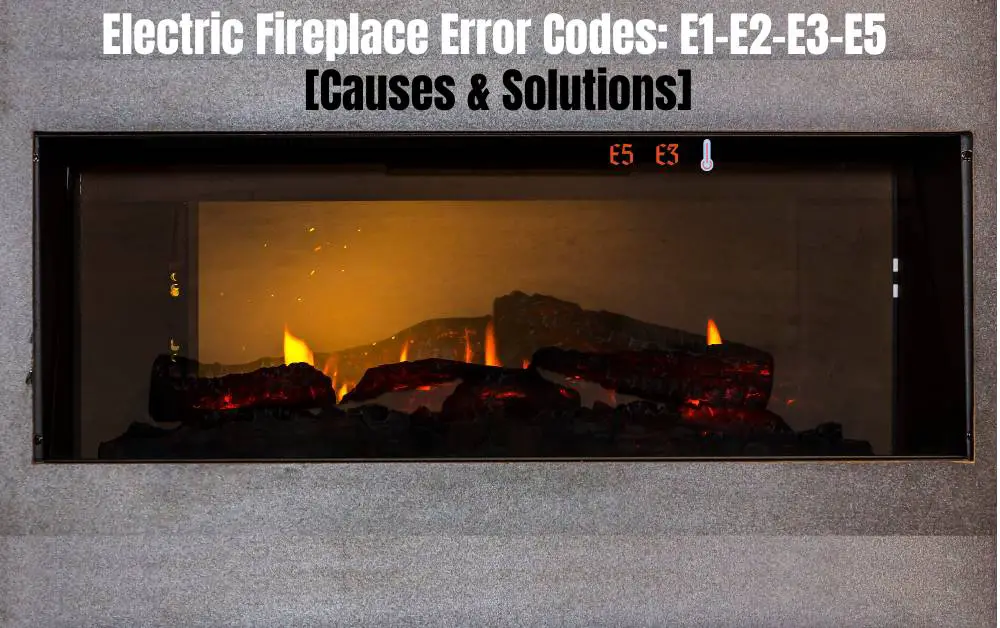Is your electric heater blowing cold air in house when you need warmth the most? Nothing’s more frustrating than relying on your heating system during cold weather only to feel chilly air coming from your vents. This common issue affects countless homeowners each year, leaving them scrambling for solutions and wondering if they need expensive repairs or replacement.
In this comprehensive guide, we’ll explore the seven most common reasons why your electric heater might be blowing cold air instead of heat, along with practical troubleshooting steps you can take before calling a professional.
Key Takeaways
- Electric heaters blowing cold air is often caused by simple issues like incorrect thermostat settings or dirty filters
- Most heating problems can be resolved with basic troubleshooting before requiring professional service
- Regular maintenance is crucial for preventing heater malfunctions and ensuring efficient operation
- Safety features sometimes cause heaters to blow cold air as a protective measure
- Understanding your heater’s components and operation can help you quickly identify and resolve issues
7 Common Reasons Your Electric Heater Is Blowing Cold Air
1. Thermostat Issues and Incorrect Settings
The most common culprit behind an electric heater not working properly is often the simplest: thermostat issues. Your thermostat serves as the command center for your heating system, and even minor problems can prevent your heater from producing warm air.
Common Thermostat Problems:
- Incorrect Settings: Your thermostat might be set to “cool” or “fan only” mode instead of “heat.” Some thermostats have separate switches for system mode and fan settings.
- Dead Batteries: Wireless thermostats rely on batteries, and when they die, the thermostat can’t communicate with your heating system.
- Programming Errors: Programmable thermostats may have incorrect schedules or temperature settings that prevent heating activation.
- Poor Placement: If your thermostat is located near drafts, in direct sunlight, or close to heat sources, it might misread the actual room temperature.
Troubleshooting Steps:
- Check that your thermostat is set to “heat” mode and the temperature is set higher than the current room temperature
- Replace the batteries if your thermostat is wireless
- Verify the programming schedule if you have a programmable thermostat
- Consider relocating your thermostat if it’s in a poor location
| Issue | Symptom | Solution |
|---|---|---|
| Wrong mode setting | Heater blows cold air | Switch to “heat” mode |
| Dead batteries | Blank display or no response | Replace batteries |
| Programming error | Heater turns on/off at wrong times | Reset programming schedule |
| Poor placement | Inconsistent heating | Relocate thermostat |
2. Heating Element Failure
The heating element is the component responsible for actually warming the air in your electric heater. When it fails, your unit may continue to blow air, but it won’t be heated.
Signs of Heating Element Failure:
- The heater runs continuously but doesn’t warm your space
- The air coming from vents is room temperature or slightly cool
- You notice a burning smell (which could indicate a complete failure)
- Your energy bills spike without increased usage
Causes of Heating Element Failure:
- Normal wear and tear over time
- Overheating due to restricted airflow
- Power surges or electrical issues
- Manufacturing defects
Troubleshooting Steps:
- Turn off power to the heater at the circuit breaker
- Visually inspect the heating element for visible damage (if accessible)
- Use a multimeter to test for continuity (if you have electrical knowledge)
- Contact a professional for replacement if the element is faulty
3. Airflow Restrictions and Clogged Filters
Restricted airflow is a leading cause of heater blowing cold air. When air can’t move freely through your heating system, it can cause overheating and trigger safety mechanisms that shut down the heating element while the fan continues to run.
Common Causes of Airflow Restrictions:
- Dirty or Clogged Air Filters: This is the most frequent cause of airflow problems. Filters should be checked monthly and replaced at least every three months.
- Blocked Vents or Registers: Furniture, rugs, or curtains blocking vents can severely restrict airflow.
- Ductwork Obstructions: Debris, pests, or collapsed ducts can block air passage.
- Dirty Blower Fan: Accumulated dust on the blower fan can reduce its efficiency.
Troubleshooting Steps:
- Check and replace your air filter if it’s dirty
- Ensure all vents and registers are open and unobstructed
- Inspect visible ductwork for obvious signs of damage or blockage
- Have a professional clean the blower fan and internal components if needed
| Filter Type | Recommended Replacement |
|---|---|
| Fiberglass filters | Every 30 days |
| Pleated filters | Every 90 days |
| High-efficiency filters | Every 6 months |
| Washable filters | Clean monthly |
4. Electrical Problems and Connection Issues
Electric furnace problems often stem from electrical issues. Your heater requires a consistent and proper electrical supply to function correctly, and any disruptions can prevent it from producing heat.
Common Electrical Issues:
- Tripped circuit breakers or blown fuses
- Loose wiring connections
- Faulty sequencers or relays
- Problems with the limit switch
Troubleshooting Steps:
- Check your circuit breaker panel for tripped breakers
- Ensure the heater is receiving power (listen for sounds, check indicator lights)
- Inspect the power cord for damage if it’s a portable unit
- Contact a qualified electrician or HVAC technician for internal electrical issues
⚠️ Safety Warning: Always turn off power at the circuit breaker before inspecting any electrical components of your heating system. Never attempt to repair electrical issues unless you have proper training and experience.
5. Wrong Settings or Mode Confusion
Sometimes the issue isn’t a malfunction at all but simply a matter of incorrect settings. Modern space heater troubleshooting often begins with verifying that the unit is configured correctly.
Common Setting Issues:
- Fan-Only Mode: Many heaters have a setting that runs the fan without activating the heating element.
- Timer Settings: Some units have timers that may be set incorrectly.
- Eco or Energy-Saving Modes: These modes might limit heat output to conserve energy.
- Temperature Limits: Built-in temperature limiters might prevent the heater from reaching your desired temperature.
Troubleshooting Steps:
- Consult your owner’s manual to understand all settings and modes
- Reset the heater to factory settings if possible
- Check for any child locks or safety features that might be enabled
- Test the heater in different modes to isolate the issue
6. Overheating and Safety Features
Modern heaters include multiple safety features designed to prevent fires and other hazards. Sometimes these heating system issues are actually the result of safety mechanisms working as intended.
Common Safety Features That Cause Cold Air:
- Overheat Protection: When internal components get too hot, this feature shuts off the heating element while allowing the fan to continue running to cool down the unit.
- Tip-Over Switches: Portable heaters often have switches that disable heating if the unit is knocked over.
- Thermal Fuses: These one-time use components blow when temperatures exceed safe levels.
- Limit Switches: These prevent the heater from operating if airflow is insufficient.
Troubleshooting Steps:
- Turn off the heater and allow it to cool completely (at least 30 minutes)
- Ensure the heater is on a level surface (for portable units)
- Check for and remove any obstructions around the heater
- Reset the heater if it has a reset button
- Have a professional inspect thermal fuses and limit switches if the problem persists
7. Unit Malfunction or End of Life
Sometimes, the problem is simply that your heater has reached the end of its operational life or has a significant malfunction that requires professional heater repair or replacement.
Signs of a Failing Heater:
- Age (most electric heaters last 15-20 years with proper maintenance)
- Frequent need for repairs
- Unusual noises (banging, squealing, rattling)
- Inconsistent heating or performance
- Visible damage to components
Troubleshooting Steps:
- Check the age of your heater (look for manufacturing date on the unit)
- Document any recurring problems you’ve experienced
- Consider repair costs versus replacement cost
- Consult with an HVAC professional for an assessment
You May Also Like:
FAQs
Why is my electric heater blowing cold air instead of hot?
The most common reasons include thermostat issues, dirty air filters, heating element failure, incorrect settings, or safety features activating due to overheating. Start by checking your thermostat settings and air filter, as these are the easiest and most frequent causes.
Can I fix my electric heater myself?
Many basic issues can be resolved through simple troubleshooting steps like checking settings, replacing filters, or ensuring proper airflow. However, electrical problems, heating element replacement, and internal component repairs should be left to qualified professionals to ensure safety and proper operation.
How often should I replace my electric heater filter?
Standard fiberglass filters should be replaced monthly, while pleated filters typically last 3 months. High-efficiency filters may last up to 6 months. However, these timeframes can vary based on usage, air quality, and presence of pets in your home.
Affiliate Disclosure: Fireplaceadviser.com is a participant in the Amazon Services LLC Associates Program. We may earn a commission when you click on certain links on this site and purchase.

Hello!! I am Jamal Khan. I often fix my home electric heaters and gas stove problems and research the common issues in the heating units to improve my knowledge and expertise. The aim of establishing fireplaceadviser.com is to share my expertise and knowledge with my audience.












